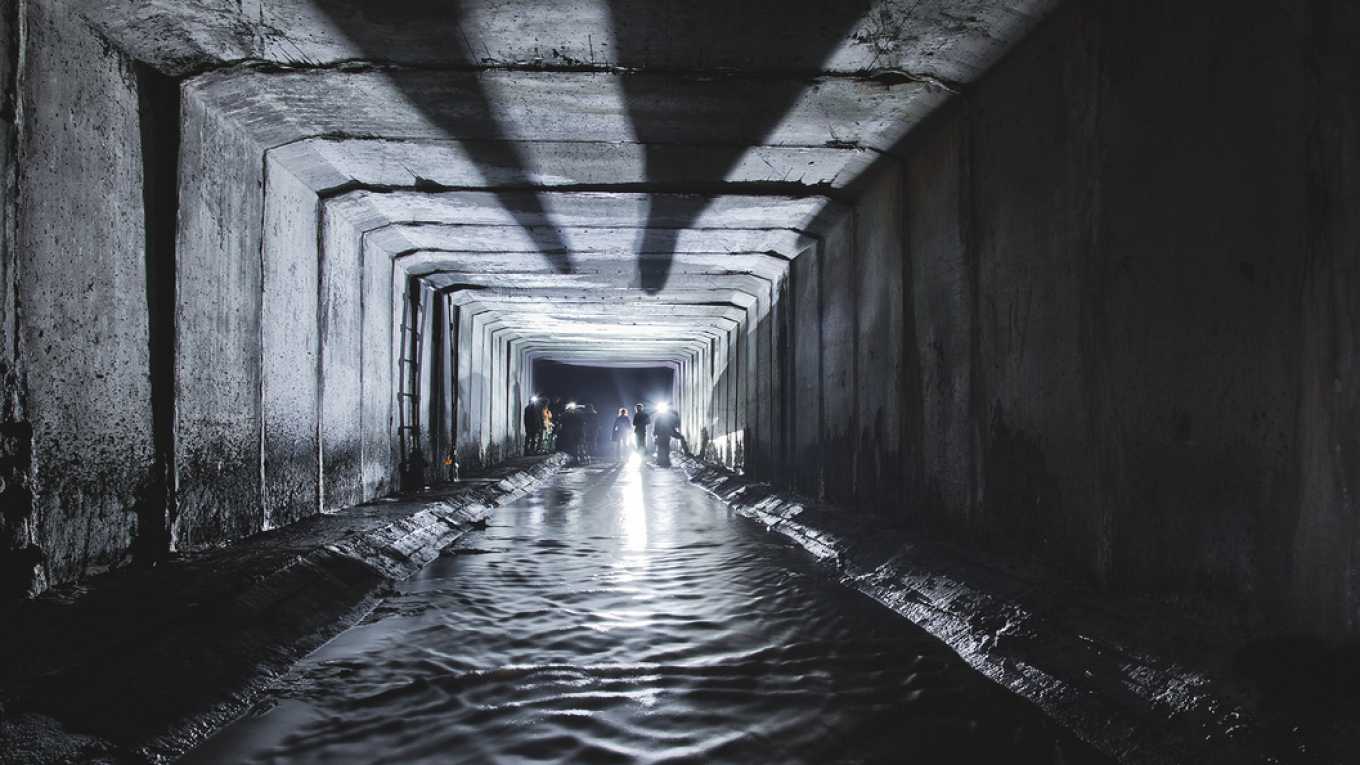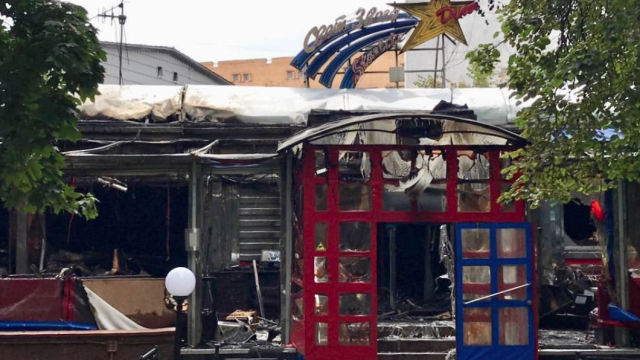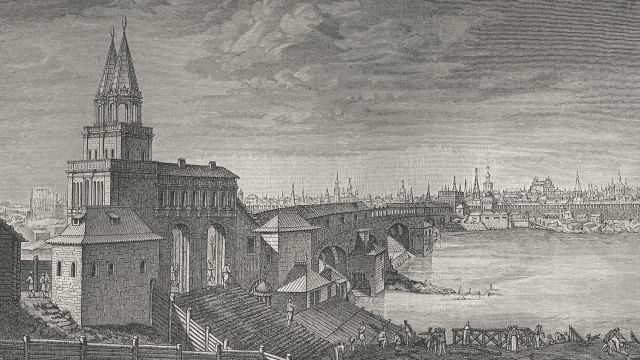We’re in a dark tunnel somewhere deep under the Metropol Hotel when our guide Ivan calls us to a halt. The beams of our head torches pick out the underground river we have been following for the last two hours as it cascades down a slope and vanishes into darkness. Shuffling along a narrow walkway beside the torrent, we peer into a large shaft blocked by a huge reinforced grille.
“This section of the tunnel leads under Red Square toward the Kremlin,” says Ivan. “The grating was put up two years ago. And that white thing on the wall inside is a motion sensor. If anybody tries to get past, security forces will be down here in an instant.”
He points out a spot on the opposite wall where a security camera was mounted to keep an eye on the entrance to the tunnel. “It didn’t last long,” he says. “It was only up for about four hours before one of us took it away as a souvenir.”
It’s a hot summer afternoon in Moscow, but the bright light and warmth of the street above seem light years away from where we are. Down in the tunnels beneath the city the temperature is a chilly 8-10 degrees Celsius and your breath hangs in the air.
Ivan is a member of an informal community known as “Diggers,” underground enthusiasts whose hobby is exploring and documenting the vast network of tunnels that lie under Moscow. These range from drainage systems and subterranean rivers to secret Soviet bunker complexes and “Metro-2,” a secret underground rail system of four lines, allegedly built by Josef Stalin in order to link the Kremlin with various sites of strategic importance.
However, while knowledge and surefootedness are essential to navigate this dark world beneath the city, access is relatively unrestricted. The company Extremalnaya Moskva (Extreme Moscow) organizes weekly guided tours along the Neglinnaya River, giving locals and tourists with troglodytic tendencies and a sense of adventure the opportunity to see Moscow from a completely new angle.
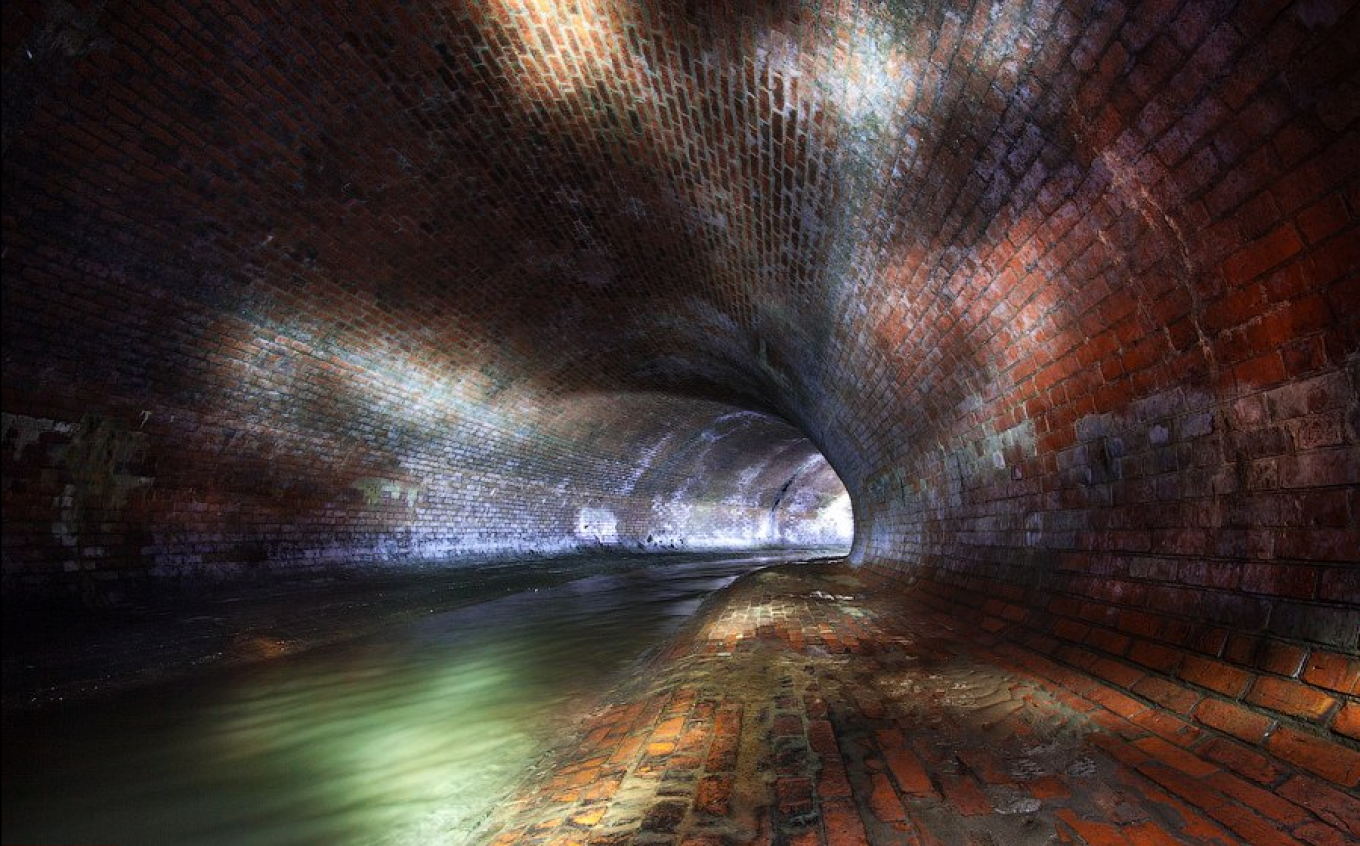
The Neglinnaya flows from near the Savyolovsky Railway Station in the north of the city under the city center and into the Moskva River. Covered in the early 19th century, this tributary now passes invisibly down Neglinnaya Ulitsa, past the Bolshoi Theater and under Red Square and Alexandrovsky Sad before emptying into the Moskva.
Our tour starts at the Tsvetnoi Bulvar metro station, where we meet up with Ivan, a young Muscovite in a baseball cap and System of a Down T-shirt. After a quick briefing, he leads us off in what appears to be the wrong direction. Wondering where we will descend into the tunnels, we cross the Garden Ring and enter a large park.
Our gateway to the underworld turns out to be an innocuous drain cover beside a flowerbed in front of a statue. Ivan hands out rubber waders, torches and gloves, and explains that we are about to descend into an old part of the city’s drainage system. “Watch out for falling debris and step aside as soon as you reach the bottom,” he warns.
Five minutes later we are standing almost waist-deep in fast-flowing water in a narrow, arched brick tunnel. Since this is not a sewer, there is no smell as such, beyond the slight odor of damp walls, stone and dirty rainwater. The murmur of traffic is faintly audible.
The six of us move along the dark passage in single file, the sound of rushing water a constant accompaniment. Every now and again a loud metallic percussion reverberates around the dank space – this means a car on the road above has just driven over a manhole cover.
At one point Ivan reaches out and picks something off the wall. He shines his torch down on his hand, where a large coppery cockroach is sitting on his finger.
“There are four types of animals to be found in the Neglinnaya,” he says, “Rats, cockroaches, fish and spiders.” Former Moscow mayor Yury Luzhkov, explains Ivan, claimed to have discovered giant white cockroaches in the Neglinnaya tunnel during reconstruction work at the Bolshoi Theater in 2010. Luzhkov described “large cockroaches” of up to 10 centimeters in length that “we couldn’t even imagine.” He insisted that the insects were white “because it’s dark there, and they don’t want humans to touch them.” Ivan, however, says there is no evidence to suggest these creatures exist.
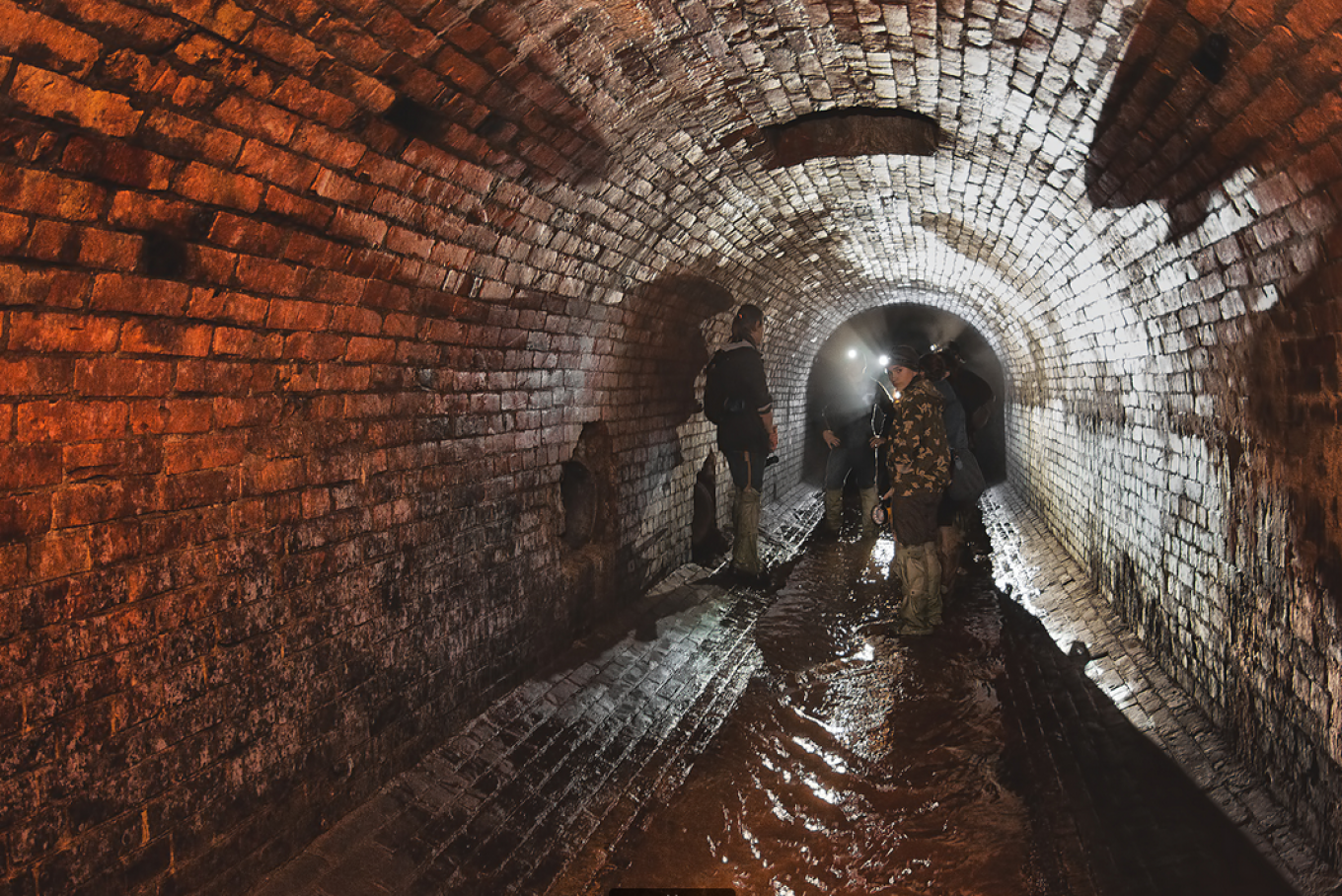
The tour takes in several sections of tunnel,
including the original “collector,” or drain, and the “new” section – a
high, 4-kilometer-long concrete tunnel built from 1974-1989 to expand
the capacity of the drainage system and minimize flooding.
At various points in the past the river has been redirected into different pipes and channels, resulting in a network of bricked-up tunnels, junctions, archways and sluices. Side pipes carry rainwater into the main channel – at one stage a torrent of water suddenly erupts from a pipe behind us, spouting tens of gallons into the river.
A keen sense of balance is essential: At times the footing is uneven, and at one stage we are required to abseil down a 45-degree chute amid rushing water.
Diggers may be serious about their obsession but they appear to possess a sense of surreal humor, as evidenced by the graffiti on the tunnel walls: In one place the giant words “War and Peace” stretch from floor to ceiling in English.
At the end of the tour, we ascend a corroded ladder up a dusty brick shaft – and when the coast is clear we emerge from a manhole right in the middle of busy Trubnaya Ploshchad. The brilliant sunlight and pedestrians passing in blithe ignorance of the secret world beneath them strike a startling contrast, as two of our companions note.
“From now on, every time I drive over a drain cover I’m going to be thinking: ‘There are people down there,’” says Alexander, whose girlfriend Alexandra has taken him on the tour as an unusual birthday present. “Few people on the surface think about what’s going on under their feet.”
Extremalnaya Moskva runs tours of the Neglinnaya River every week for 2,470 rubles ($42) per head. An English-speaking guide is available on request.
+7 (499) 322 8182
A Message from The Moscow Times:
Dear readers,
We are facing unprecedented challenges. Russia's Prosecutor General's Office has designated The Moscow Times as an "undesirable" organization, criminalizing our work and putting our staff at risk of prosecution. This follows our earlier unjust labeling as a "foreign agent."
These actions are direct attempts to silence independent journalism in Russia. The authorities claim our work "discredits the decisions of the Russian leadership." We see things differently: we strive to provide accurate, unbiased reporting on Russia.
We, the journalists of The Moscow Times, refuse to be silenced. But to continue our work, we need your help.
Your support, no matter how small, makes a world of difference. If you can, please support us monthly starting from just $2. It's quick to set up, and every contribution makes a significant impact.
By supporting The Moscow Times, you're defending open, independent journalism in the face of repression. Thank you for standing with us.
Remind me later.


